Why a dive in france waterways history focused on the Rivers of Wester France ? Because it is always best -in order to go forward- to know where we come from ! This story is not meant to be exhaustive and is built upon online source and the INA website … But also and most importantly on oral testimonies, treasures of knowledge that we find in our local river enthusiasts ! Do not hesitate to share yours !
The purists are already appaled by this : talking about history with the name “Rivers of Western France” (label created in 2020). It is not an innocent mistake : the history of our area (like most) is the result of a complex evolution.
And sometimes, the simple act of naming is already a battle ! Throughout centuries, the rivers, territories and even the navigable french waterways changed their names. Wether for identity reasons, prononciation habits, or simply to follow our rivers’ use.
When you hear today “Rivers of Western France®” today, it is a reference to the navigable part of the Sarthe, Mayenne, Oudon and Maine river. On a coherent touristic area level.
We will spare you the long, yet epic, stories of the name of each river. Let’s focus on their common history instead (seen from a sailor’s standpoint of course !).
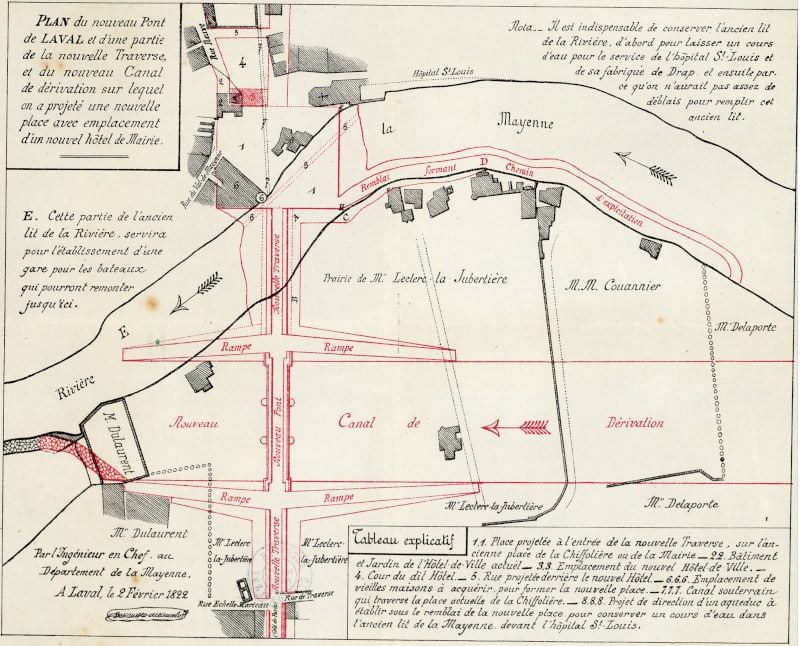
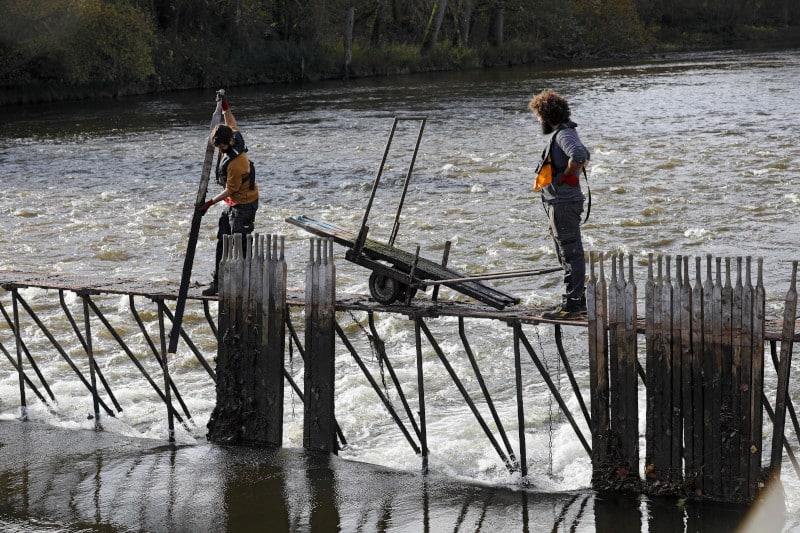
First of all, let’s correct a commonly heard mistake. The Rivers of Western France are no canals ! When we talk about inland waterways in france, we mostly think about artifical canals … That is not the case here !
The navigable waterways here are natural rivers that were transformed by woen and men overtime.
Long before the Medieval times, communities often settled along rivers. Aside from the evident access to water, our ancestors took many benefit from it. The source of food (fishing), the soil fertility thanks to the silt left by the floods, the protection given by these naturel barriers, etc …
In Middle Age, the actual “Rivers of Western France” became a booming means of transport. First of all thanks to the natural mobility allowed by the current. The flotability of the ships also allowed to move heavy charges. But also (at a time when roads are dangerous), the river represents a safer way to travel.
During the XVIth century, we can see the arrival of many constructions along the rivers. Dams, outlets, and the ancestors of lock’s door begin to dot the landscape. All these inventions are aimed to better handle the river height changes and the delicate sections of the rivers. It is, by the time, a revolution : you would “only” need a 15 days journey to go down from Laval to Angers ; and around 25 days to return. For comparison, this trip would need a 15 hours journey nowadays !
The 19th century is widely known as a golden age for inland navigation.
Important structure works are undertaken. Among them we can list the numerous quays, bridges and viaducts, but most importantly : the lock and its sluice gates. The one we use nowadays are almost identical as the one developped then.
The river becomes an important link for mobility. Many cable ferries are installed where bridges are missing (like the one in Menil to allow factory workers to cross the river : a ferry that is still in use nowadays !).
We also see parts of our historical patrimony apparate and disappear. In Laval, for example, the house on stilts impacted by the numerous floods of the Mayenne are replaced by docks and quays. Many washing places disappear and are replaced by floating wash house : like the Saint-Julien that you can visit in Laval !
The gabare, a typical boat from the West of France, is developped. These barge come with a flat-bottom and a short draft, allowing to load heavier charges. On the Sarthe river of Anjou, the gabare “La Gogane” still offers commented tours to uncover the beauty of the region !
And of course, the numerous bridges limiting (or even preventing) the use of mast and sails … The problem of motorisation still remains ! That’s where the towpath comes into play, implemented all along the rivers of our region. You can still nowadays find portions of it along the Sarthe, and all along the Mayenne and Maine. Thanks to these adjustments, the gabares are towed by hand or horsepower. The tourist cruise boat “L’Hirondelle” still offers a demonstration of the process in one of its cruise in Grez Neuville’s lock canal.
These innovations turn the 19th century in the Rivers of Wester France into a merchants’ golden age. Coal, cereals, wood, iron, linen and other are transported throughout the region and toward the Loire. Some famous local products such as marble, wine, tuffeau stone, roses, etc … are even exported worldwide. !
The 20th century is a turning point for inland navigation on a worldwide scale. And the Rivers of Western France are no exception here !
Some technology improvement are serving the cause. Among them : steam and diesel engine. The pusher boats and other kind ow towboats are also invented, allowing to move several barges silmutaneously.
But first, a feature is creating a handicap for the area. If most of the france waterways are equipped with “Freycinet” locks ; the Rivers of Western France are built on a “Becquey” size. This template (shorter) creates a limit on what kind of boat can cross the region.
But, most importantly, the arrival of the railroad will make commercial boats obsoletes quite fast, beating all records of rapidity and capacity. A crazy race toward the cheapest course is engaged. And by the beginning of the 1970’s, the last commercial barges are abandoning the region. And the drop of traffic becomes a vicious circle : it results in rivers silting and equipment deterioration. Which in turns, makes the area even less attractive, etc …
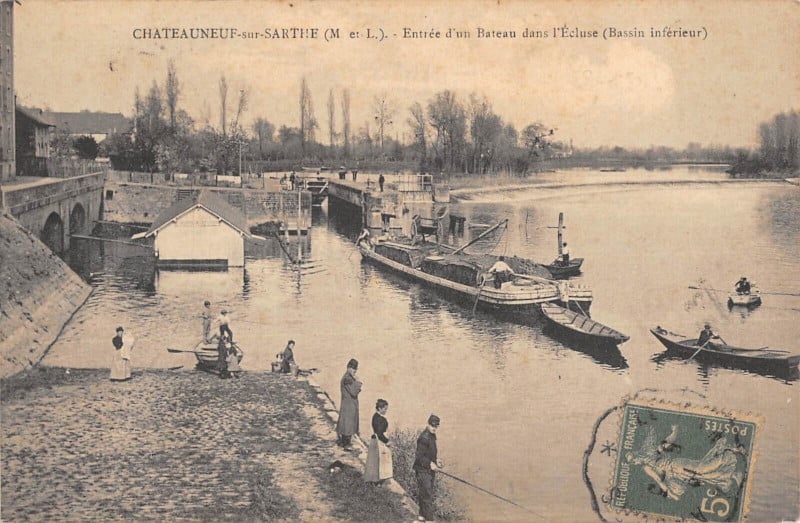
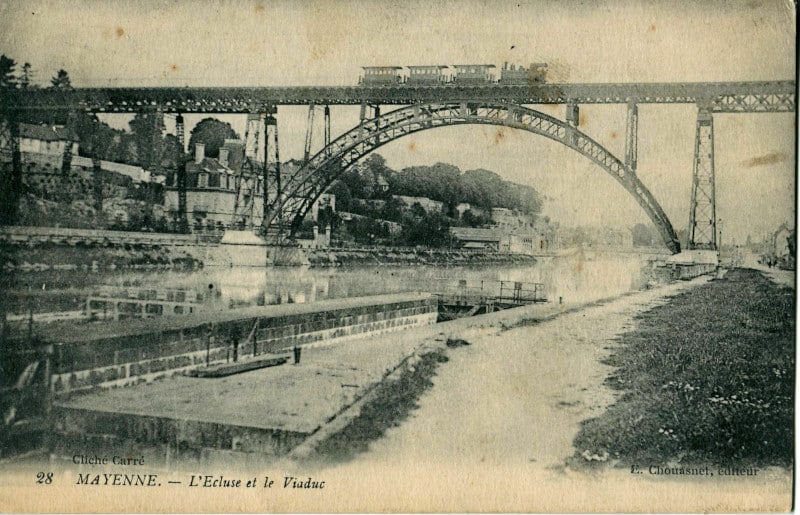
Inspired from the English tourism (a custom that is already common on the other side of the Channel), this kind of leasure begins to apparate in France at the end of the 1960’s.
For us, it is the public authorities of Mayenne that lays the first stone in 1976. Ambitious renovations and call for tenders to attract professionnals. The dynamic soon spreads to neighbouring territories, and a collaboration between the three counties sarts (Sarthe, Mayenne and Maine-et-Loire aka “Anjou”). The network is called by the time “Bassin de la Maine”.
In 1980, we (Anjou Navigation) settle in the little village of Grez Neuville with a handful of houseboats. The start of an odyssey that still lives today !
Many activities are developping around the river : boat and houseboat rentals, sport associations, fishing infastructures, etc …
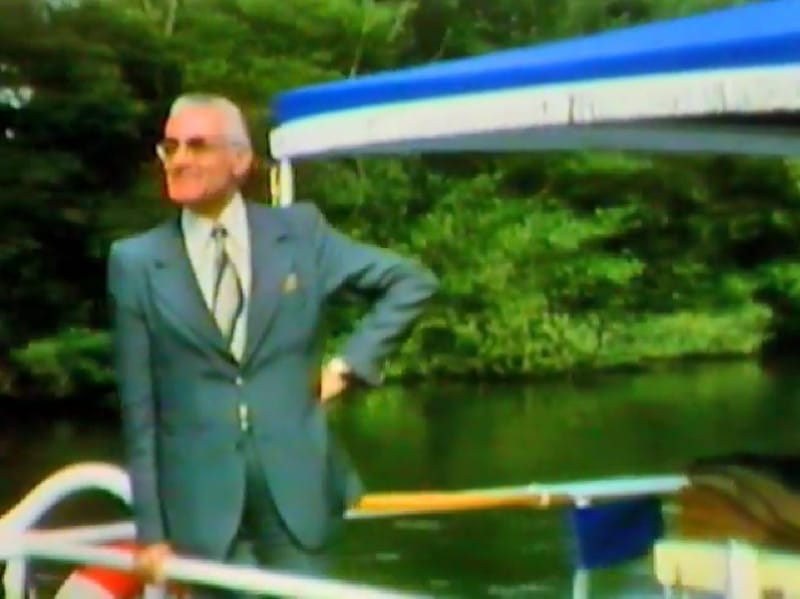
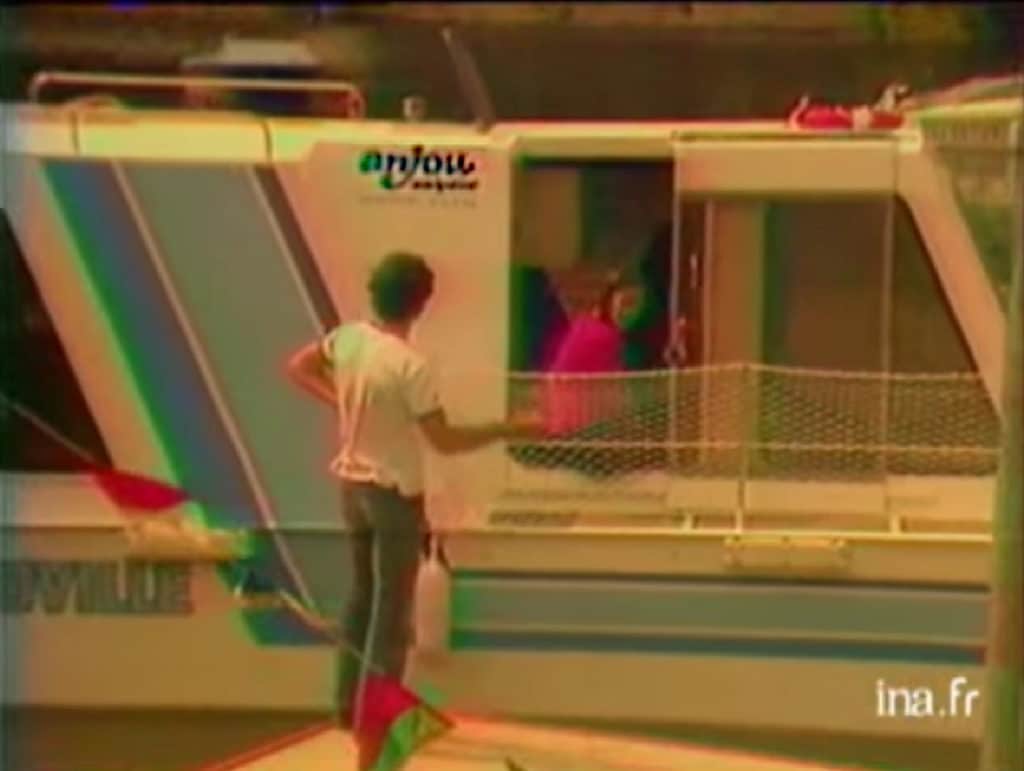
With the new century, new stakes and expectancies are allowing our region to stand out.
Far from the big national operator of france waterways “VNF”, our region is still owned and operated by the department themselves. The Sarthe, Mayenne and Maine-et-Loire : where the rivers run. A feature that makes the pride of our area, as it is a guarantee of quality and follow-up.
Also, the Natura 2000 label obtained in the lower Anjou valleys (approximately 10,000 ha) reveals the will of environment preservation that drives the people here. This specific area is indeed known for its wide water expanses and its protected natural heritage (fauna and flaura).
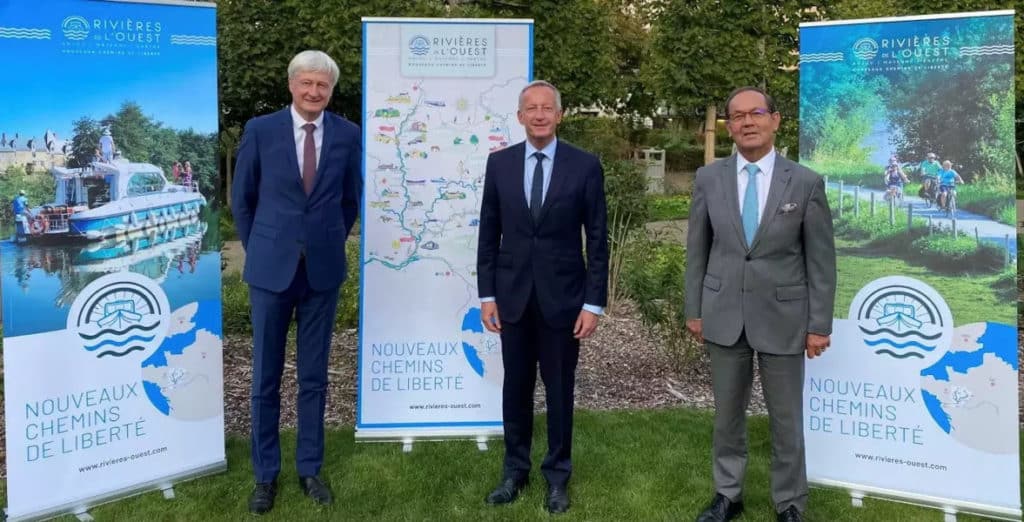
As time goes by, the departments are realizing the touristic potential of the area. In 2019, the “Rivers of Western France®” label is launched. The Sarthe, Mayenne and Anjou decide to create a common name and project around the waterways to pool the resources. After a serie of studies to find and create a common identity, a communication campaign is launched nationally.
In 2022, a second big study is undertaken to take inventory of the infrastructures and activities along and near our rivers. Which means that some interesting development prospects are still ahead of us !
Our time brought with it new risks and environmental empact. And the france waterways are not spared by these new stakes ! The flood episodes, althought naturally common, tend to get stronger and more impredictable. But most importantly, droughts are beginning to impact our network.
In 2022, the heavy summer heatwave that reached Europe impacted for the first time our region in such a manner. The geographical variety of our tributaries, that normally protects us, was not 100% sufficient. For the first time, some protective restrictions were taken toward sailing boats and others. First creating worry, this time eventually became an example of successfull cooperation between the operators and users of the river. The importance of the lock-keeper was then underlined (a big benefit in our area that still maintains its lock-keepers). Gathering boats in their locks to limit the number of passage ; sailors and lock-keepers communicated to anticipate the traffic. The feedback we got from returning crews here were unanimous : what started as an urgent improvisation ended up a real success !
This droughts are also the main factor for cyanobacteria developpment (heat, stagnation of the water due to the lowering levels). These bactierias, naturally present in low quantity, spread rapidely in these conditions. Turning then the waters into the characteristic green of the chlorophyll they synthetize, the toxicity of the water rises. This can present some risks for human and some animals.
These new difficulties are real challenges for the world of tomorrow, pushing all those involved to think about the way we share water. But also to question our individual and collective way of living : their impact -direct and indirect- on our environment.
Receive promotions and new products in preview with the Anjou Navigation Newsletter
Quai National
72300 Sablé-sur-Sarthe
+33 2 43 95 14 42
(abroad) : (+ 33) 243 95 14 42
contact@anjou-navigation.fr
Find us on THE MAP